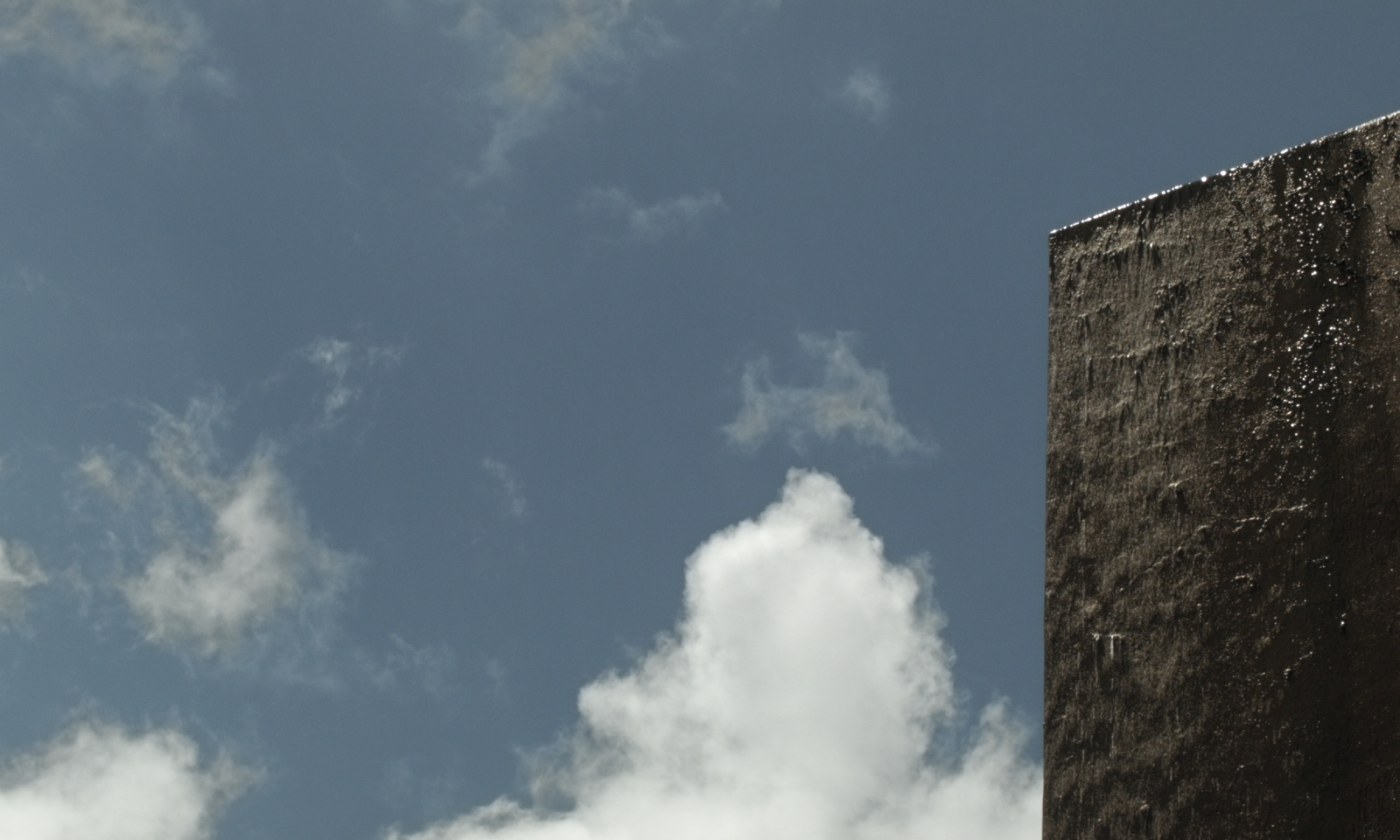von Roger Koza
Die guten Filmemacher verachten den Tourismus. Ihre Mission besteht darin, den Akt des Filmens neben den des Reisens zu stellen: dann ist die Kamera eine Erweiterung der Augen und der Ohren, sogar der Haut und der Zunge, und ihre Bewegung gehorcht nichts anderem als der Neugier. Gute Filmemacher sind neugierig, das ist die Tugend, die eine Ästhetik zusammenhält.
In virar mar / meer werden reist der deutsche Filmemacher Philipp Hartmann wieder gen Süden. Er hatte schon in Bolivien und Argentinien gefilmt (Von der Notwendigkeit, die Meere zu befahren), seinerzeit wollte er auch die Zeit anhalten oder in ihr reisen (Die Zeit vergeht wie ein brüllender Löwe, sein erster Langfilm), danach reiste er durch 66 Kinos in Deutschland und zeigte diesen ersten Langfilm (66KINOS) und jetzt hat er Brasilien besucht, um einen weiteren Film zu initiieren. In jenem Land, das er vor Jahrzehnten kennen lernte, wegen seines Studiums der Ökonomie, und das er regelmäßig besucht, erahnte er einen Film, den es zu machen galt; vielleicht war er ihn sich selbst schuldig. In jenem weit entfernten und riesigen Land, dessen offizielle Landessprache er beherrscht, lernte er Danilo Carvalho kennen, einen Kollegen, der außerdem noch Tonmeister ist, mit dem er beschloss, diesen Film über das Wasser anzugehen. Warum ein Thema wählen, das eher den Meteorologen eigen ist als den Filmemachern? Wie ein Element filmen, das unerlässlich ist für die Existenz von Leben?
Schon am Anfang schwelgen Carvalho und Hartmann in drei fantastischen Bildern davon, wie man das macht. Ein mächtiger Strahl aus einem Stausee ist ihr Motiv; das Wasser ist dort ein Ausdruck unaufhaltsamer Energie und die Kamera übernimmt es, das zu bezeugen. Das Bild enthält auch das Aufnehmen des Tons, es folgt ein weiteres ähnliches Bild und im letzten dieser Sequenz wird das Wasser selbst zur Leinwand und beherbergt bewegte Bilder, denn auf den selben Strahl wird ein Film projiziert. Mysteriöse Verbindung und Paradox: niemand kann mehr als einmal im selben Fluss baden, aber das kann sehr wohl gefilmt und unendlich-fach wiederholt werden. Anders gesagt: das Kino kann die Zukunft des Wassers einfangen, die eigentliche Eigenschaft eines Elements, das sich durch seine Veränderung definiert. Wasser in Bewegung, im Stillstand, verdunstetes oder in Wolken kondensiertes Wasser kann gefilmt werden, und im Verlauf von virar mar / meer werden werden die verschiedenen Modulationen von Wasser wirkungsvoll und voller Schönheit dargestellt. Aber nicht nur von Wasser lebt dieser Film.
Ein poetisches Prinzip herrscht in dieser ästhetischen Meteorologie vor: Kontrast und Kontinuität gestalten eine liebenswürdige Dialektik, die sich von einer Gegend in Deutschland zu einer anderen in Brasilien bewegt. So passiert der Schritt von einer Szene in Dithmarschen in den Sertão im Nordosten Brasiliens so nahtlos wie unangekündigt. Und so schreitet virar mar / meer werden voran, entfaltet seine Didaktik: die Üppigkeit einer Landschaft in Deutschland bezeichnet den Unterschied zum dürren, immer trockenen Ökosystem jener nördlichen Region Brasiliens; das riesige Haus eines rätselhaften deutschen Musikers glänzt in der Gegenüberstellung mit den Häusern eines Dorfes im Sertão, in dem ein Filmemacher mit seinen Nachbarn Filme dreht; die brasilianischen jungen Frauen, die ein Bad im Stausee genießen, sind mit ihren Grübeleien nicht so weit entfernt von den jungen Frauen, die sich am Ufer eines Flusses in Deutschland unterhalten; ein mysteriöser Engel kann dem Musiker helfen, der in einer Kirche in Dithmarschen Bach spielt; und wenig später: eine Analogie von Christus – vielleicht kann er nicht mehr übers Wasser laufen, weil er eine menschliche Nachahmung ist – der Hartmann begrüßt, während der gerade eine Tonaufnahme im Sertão macht. Das alles sind ähnliche und zugleich verschiedene Lebensformen, vereint durch einen Film, der Situationen und Details zusammenträgt, um daraus ein kaleidoskopisches Portrait der Verbindung unserer Spezies mit dem Wasser zu formen.
Und deshalb sind in virar mar / meer werden Bilder zu sehen von Menschen, die ihre Gärten bewässern – allüberall als ihre tägliche Arbeit, Bilder von wilden Regenfällen, die auf einen apokalyptischen Bilderkosmos in unserer Vorstellung verweisen, Bilder von Männern und Frauen, die die Berührung ihrer Körper mit dem Wasser in Flüssen und Wasserfällen genießen, von urtümlichen Fischen, die sich in einem Aquarium bewegen, oder vom Blick aus der Luft, in dem man die schmerzliche Bedeutung einer Dürre spürt. Vom Mythos zur Ökologie, von der Ökonomie zur Phantasie, keine Verbindung zum Wasser fehlt in dieser spielerischen Phänomenologie dieses Elements, und sie entfaltet sich durch sorgfältiges Herausarbeiten der Bilder und auch der sie umgebenden Töne; denn vor allem ist virar mar ein kinematografisches Werk, ein fließender Körper aus sicht- und hörbaren Schichten, die dazu bestimmt sind, die flüssige Materie zu formen.


